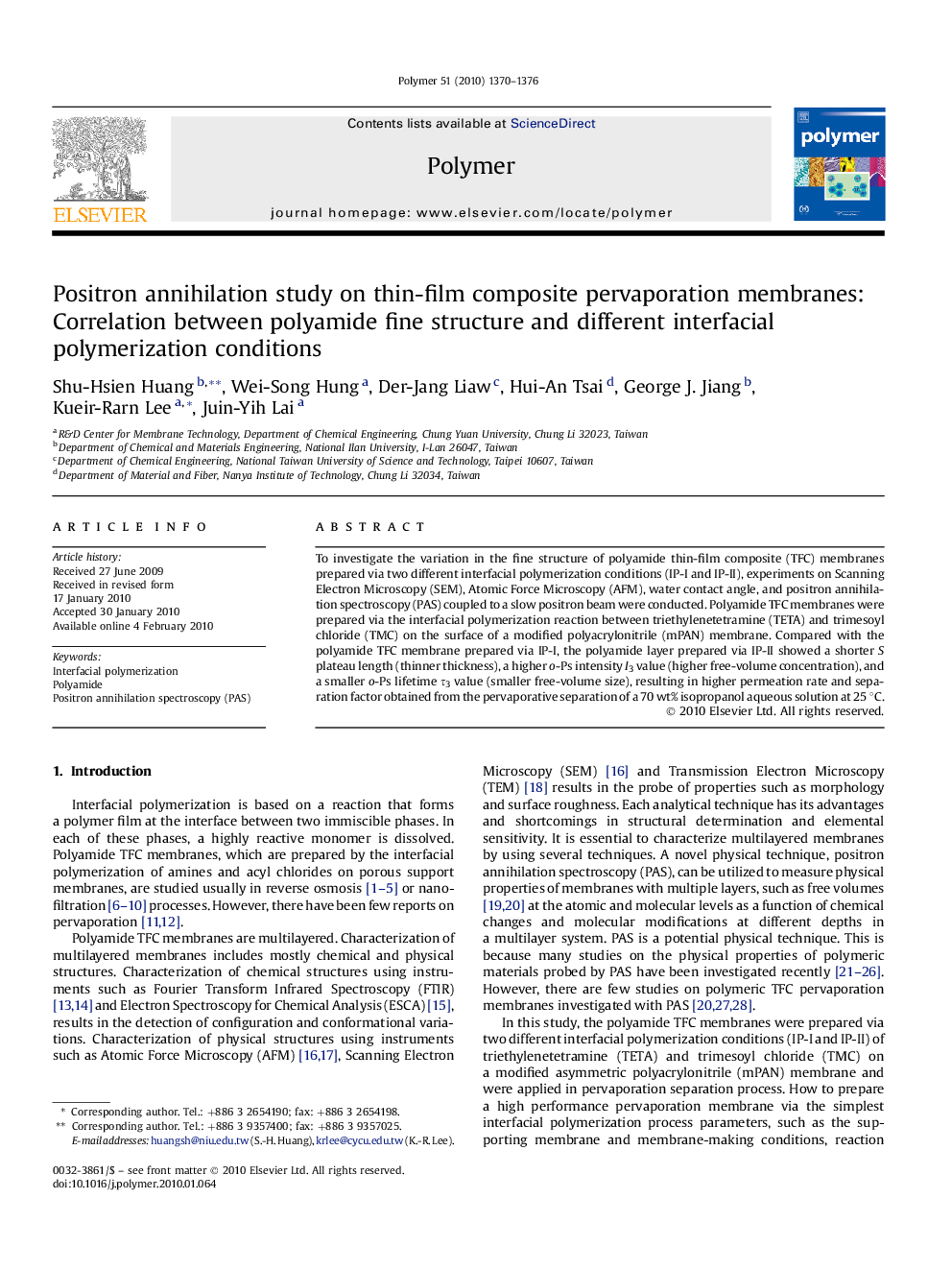| Article ID | Journal | Published Year | Pages | File Type |
|---|---|---|---|---|
| 5185445 | Polymer | 2010 | 7 Pages |
To investigate the variation in the fine structure of polyamide thin-film composite (TFC) membranes prepared via two different interfacial polymerization conditions (IP-I and IP-II), experiments on Scanning Electron Microscopy (SEM), Atomic Force Microscopy (AFM), water contact angle, and positron annihilation spectroscopy (PAS) coupled to a slow positron beam were conducted. Polyamide TFC membranes were prepared via the interfacial polymerization reaction between triethylenetetramine (TETA) and trimesoyl chloride (TMC) on the surface of a modified polyacrylonitrile (mPAN) membrane. Compared with the polyamide TFC membrane prepared via IP-I, the polyamide layer prepared via IP-II showed a shorter S plateau length (thinner thickness), a higher o-Ps intensity I3 value (higher free-volume concentration), and a smaller o-Ps lifetime Ï3 value (smaller free-volume size), resulting in higher permeation rate and separation factor obtained from the pervaporative separation of a 70 wt% isopropanol aqueous solution at 25 °C.
Graphical abstractDownload full-size image
